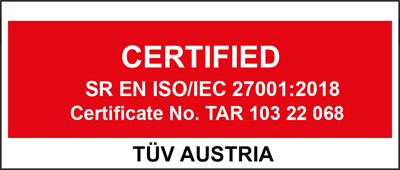Blog

Reasons your SOPs aren’t working and how to fix it
While we tend to think of standard operating procedures (SOPs) as sets of instructions to be passed around a company, this simple definition actually hides a lot of complex work behind the scenes. Shaping a company culture that values procedures includes many steps, from methodically crafting the procedures to making sure everyone is up-to-date on the latest procedures, and have no issue in following them.
This multi-layered process means that your SOPs can be rendered ineffective even if you do most things right, because it is easy to miss important information or mismanage procedures. Here is how that can happen – read further to learn more about the five main reasons your company’s procedures are not as effective as you hoped, and what you can do about it:
Your SOPs’ purpose and scope are too broad
An effective SOP has one clear purpose, which is meant to be achieved through practical, concrete and detailed steps. This way, the SOP is easy to read and to put into practice. However, since many tasks are interconnected, building procedures that cover just one task or goal will not be very practical. At the same time, procedures that take a long time to read, taking up your employees’ time and energy as they try to figure out which information is relevant to them, will only frustrate them and make them distrust procedures.
Therefore, you will need to be able to create separate procedures that are easily and intuitively connected. Since this is no easy task, do yourself a favor and take advantage of available technology. For connected or complex procedures that involve multiple scenarios, use the right tools, such as the Zupría SOP management tool.
Your SOPs do not include the right info
This could mean that the information presented in the procedures is not accurate, complete, or is not easy to understand. What can you do if you suspect this is the case? First of all, your procedures can certainly benefit from a good structure – and we recommend using a template when creating them. Secondly, go over procedures to make sure they describe a process from beginning to end, without missing any steps. Talk to the people in charge of the tasks described in the procedures – you might be surprised to find out some small, yet critical piece of information has been mistakenly left out.
Another, more subtle problem, could be the language used in the procedure. Namely, the language could be too technical or abstract to understand, especially if it’s written by someone who is not used to writing instructions.
Let’s say, for example, that one of your procedures is meant to explain the use of a complex digital tool. When writing the procedure, avoid using only vague terms like “update”, “link”, “synchronize” or terms used by the tool itself to describe different processes. These terms describe an outcome; however, the procedure must describe HOW the user will achieve this outcome. So, for instance, instead of saying “Next, you must synchronize x and y”, your procedure should say “You must push the button at the bottom of the page, which will synchronize x and y”. This will ensure that users understand how and why they are required to act a certain way.
Your SOPs are not up-to-date
Following a procedure and finding out later that it no longer applies can be a nightmare. At its best, it can increase employees’ workload and, consequently, their dissatisfaction. At its worst, it can cause big mistakes that will cost your company a lot of money. So, you can see why it is important to be able to quickly update SOPs and let your employees know about these changes.
It’s understandable, however, how your SOPs could become out-of-date. Building and updating procedures can be time-consuming and tiresome tasks, especially if you’re working with digital documents such as PDFs or Word docs. When the time comes to update the procedure, you need to find and edit the right document, and any other related documents, then send it to the people the procedure is designed for.
Many things can go wrong during this process: editing the wrong document, misnaming and misplacing it, editing multiple times, sending it to the wrong people etc. The solution is to simplify these tasks – from using templates to sending out automatic notifications – so that your SOPs are easy to update. Click here to learn how.
Your SOPs are difficult to find
When SOPs are not easily accessible, even the most disciplined employees will be tempted to do things the way they see fit, rather than how they’re supposed to be done. Anyone can recognize the fact that spending a lot of time searching for a procedure is, simply put, extra work that employees are unwilling to do, in many cases because they already have a lot on their plate.
You cannot expect employees to follow procedures when the procedures are not available to them. Use the right tools to organize procedures and make them accessible, and procedures will be applied. Even more, this will also help send the right message to employees: if procedures are important enough to invest in, then they are important for everyday business.
Your employees are not using the SOPs
This issue could have multiple causes, and it is very important to find out why your employees are avoiding SOPs because, usually, you can put things on the right track when it comes to compliance. Few employees will purposefully not use SOPs, unless they are really not helpful or they are difficult to access. So, if you have quality SOPs, but your employees seem to avoid them, what could be the problem? Of course, you could ask your employees and maybe get some valuable feedback on this matter. However, we can suggest a few ideas – people do not follow quality SOPs because:
- They are not informed about the importance of using SOPs in their daily work
- They don’t know which procedures to follow and where they can find these procedures
- They have been doing things without procedures for a long time and don’t understand why they should change
- They witness other people and even their boss not following procedures, which sends the message that it is optional.
How to create an SOP-oriented company culture
Most employees will welcome the idea of using SOPs, if they understand that procedures make their jobs easier. Here is how you can promote SOPs in your company:
- Introduce new employees to procedures from their first day at the company
- Share resources – you can start with this article that explains how both a company and its employees can benefit from the use of procedures
- Use a standard format and specially designed tools for procedures
- Involve employees in improving the procedures that they must use in their work
- Encourage employees to propose and create their own procedures
- Track procedure usage, so you get an idea of where to act if procedures are not applied.
These are only a few steps you can take to show people in your company that you take procedures seriously. Of course, you might wonder how much time and effort doing all of that will take. With the right tool, these processes are largely automated. For example, Zupría SOP can help you save time by providing a template for procedures, an automated notification system, the ability to track procedure usage and keep your company’s know-how safe, and more.
Remember, if your procedures are not being used, it will be much more useful to look at how your procedures are made, changed, and communicated to employees rather than focus on more discipline for your personnel. An SOP-oriented company culture will bring people together in no time because your employees want to save time and get the right results as much as you do!





